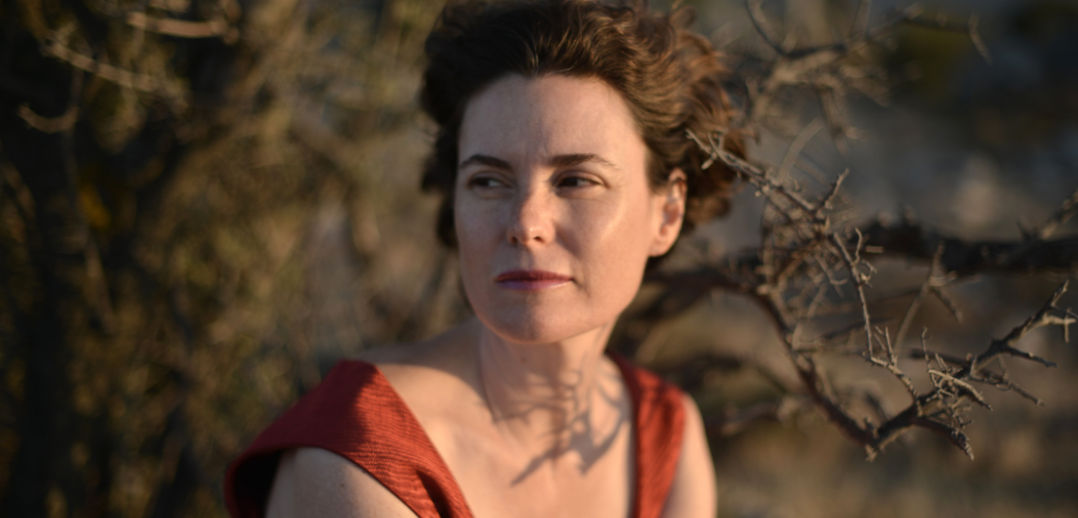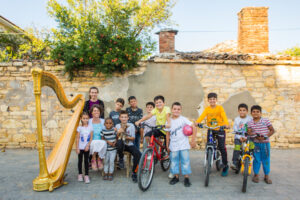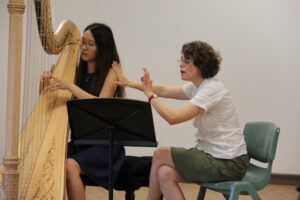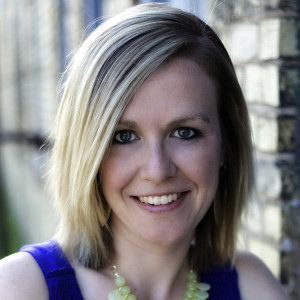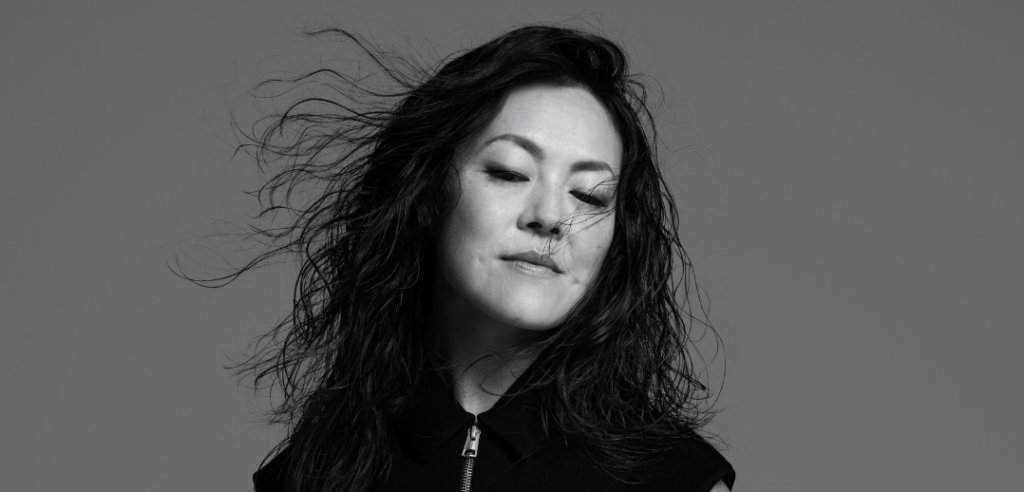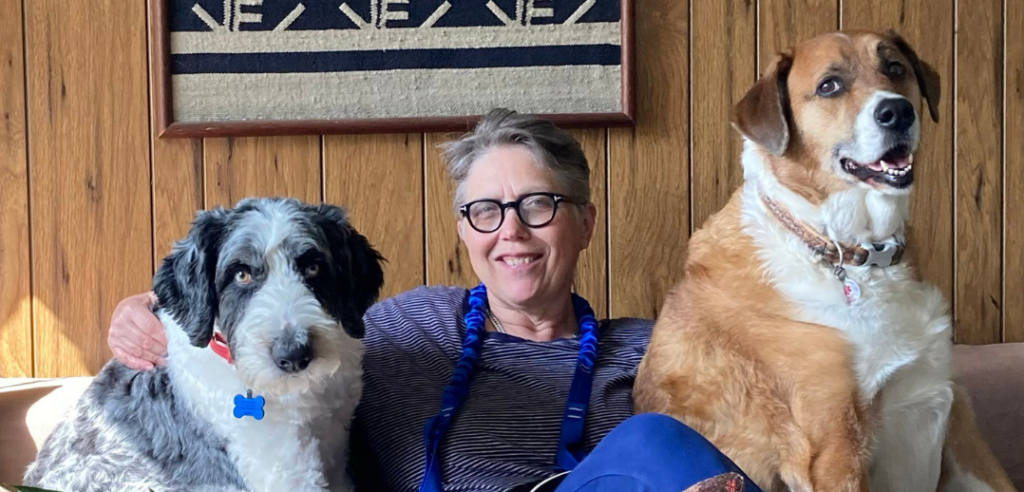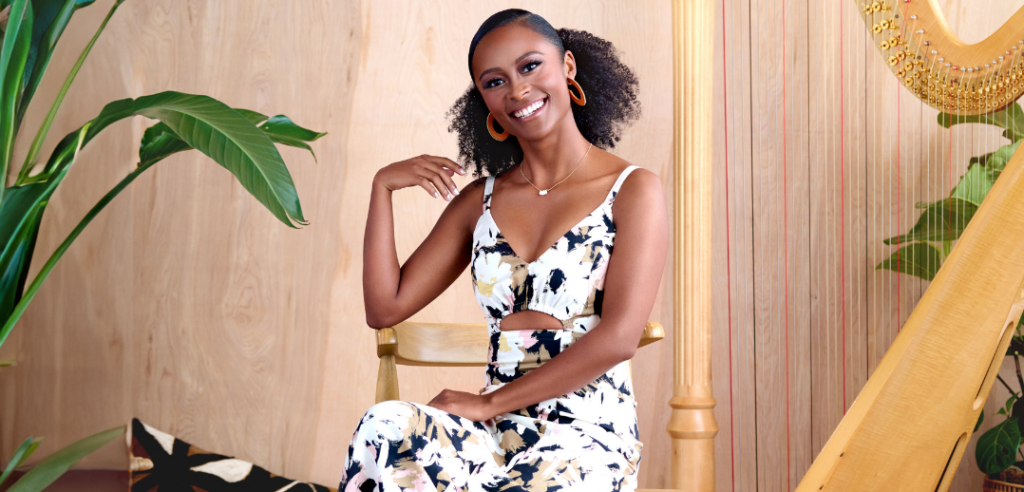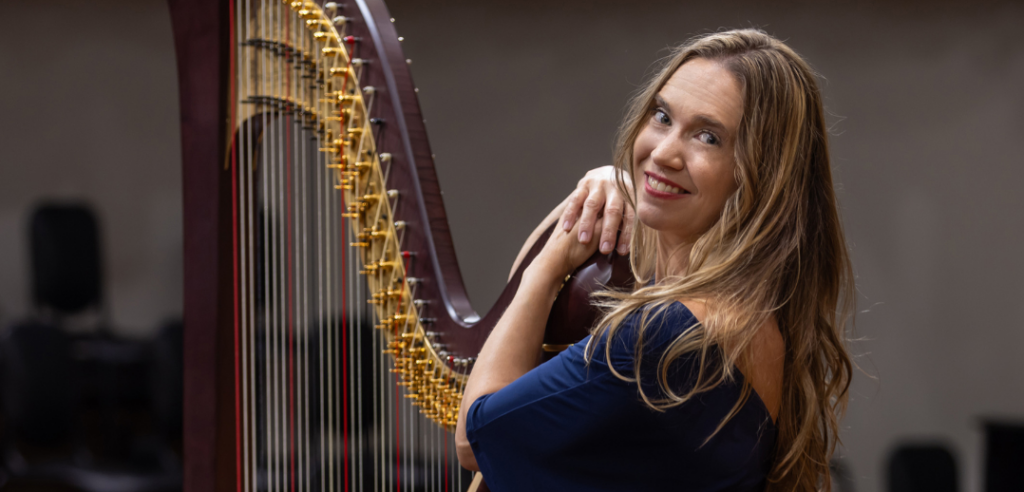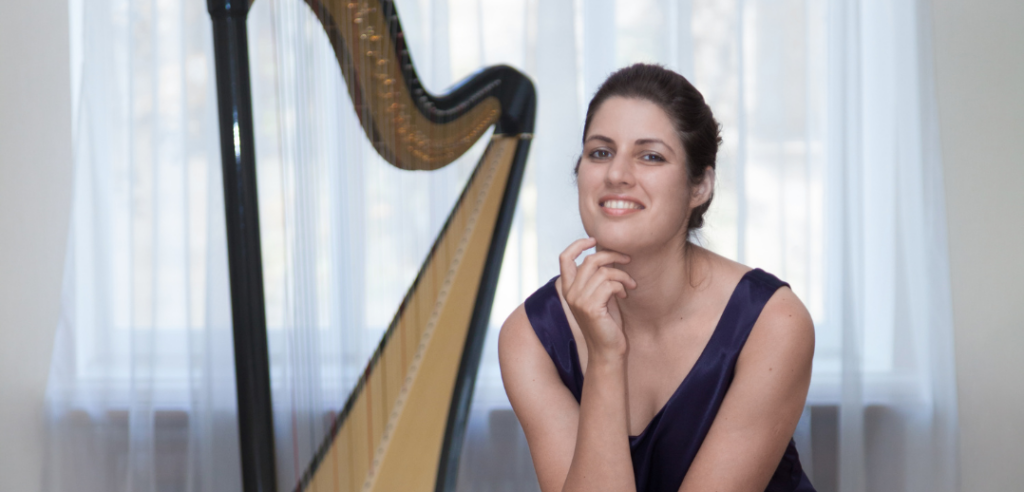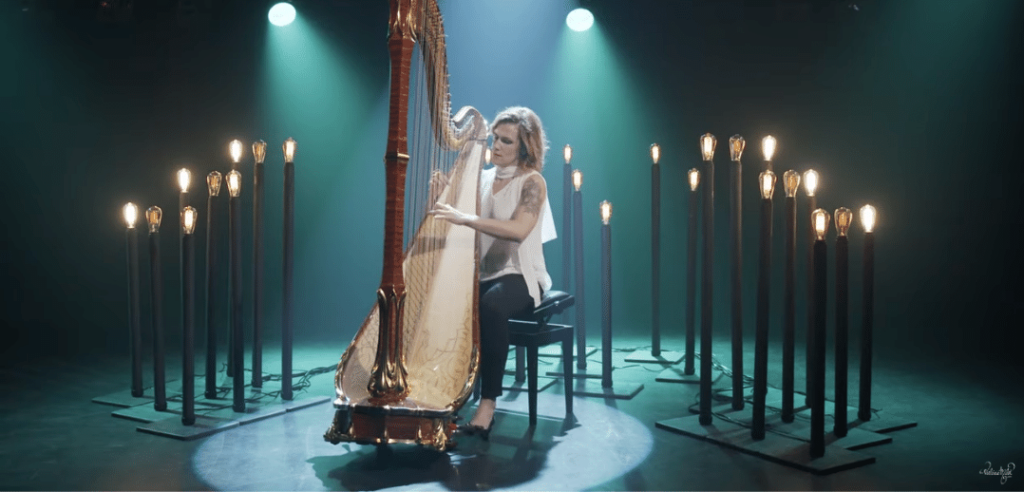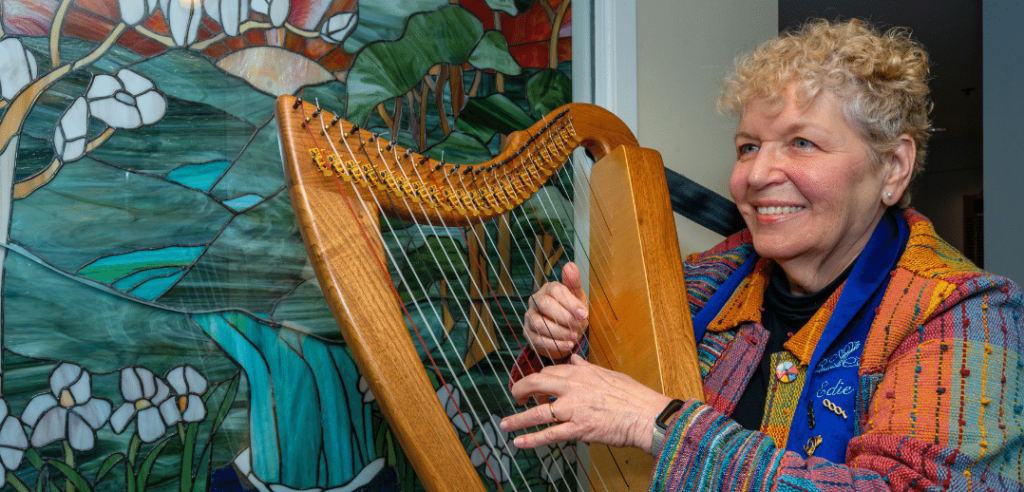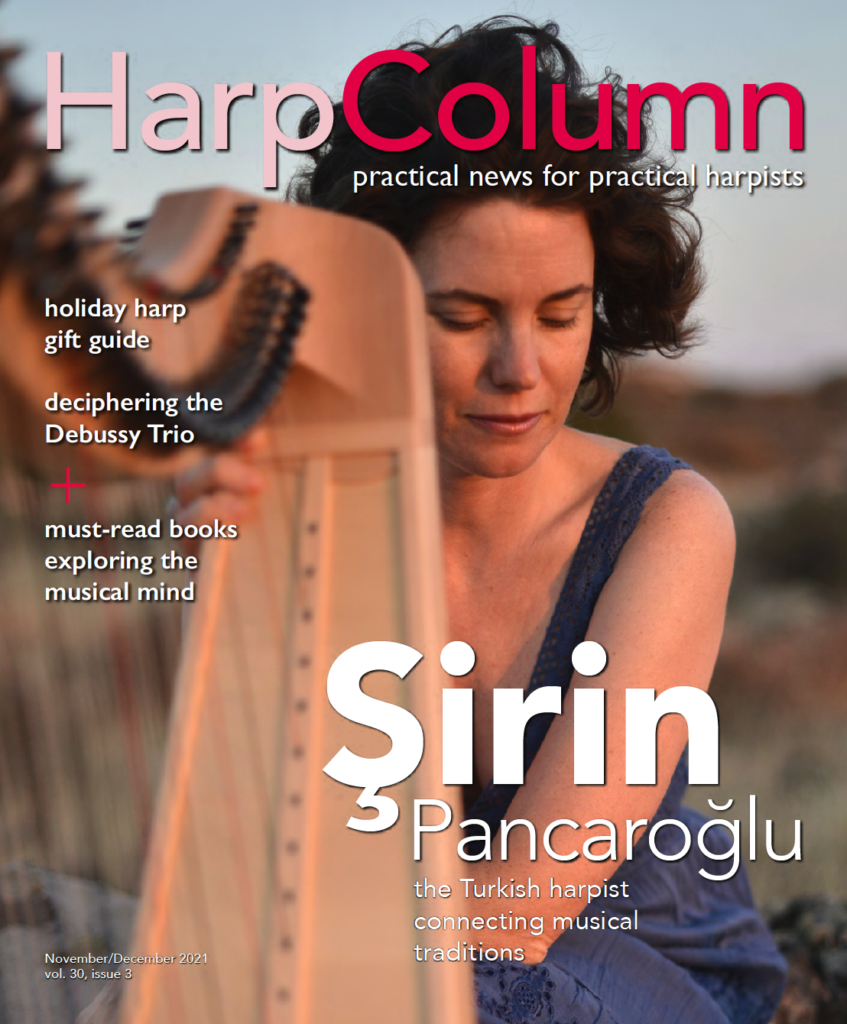We spoke to Şirin Pancaroğlu (pronounced shee-reen pun-jar-OH-loo) last summer from her home in Urla, a small town on the Aegean coast, about 50 miles outside of İzmir. She made a big move there from Istanbul, the largest city in Turkey and one of the largest cities in the world, about four years ago. She had lived there for almost 20 years, but when the time felt right for her to continue her career without being in the heart of a big city, Pancaroğlu seized the opportunity to move to the small town where she spent holidays as a child. While she loved the vibrancy and opportunities of Istanbul, every time Pancaroğlu returned to the city after holidays, she felt her mind couldn’t catch up with the urgent tempo of life there. It was a move that turned out to be well-timed when the COVID-19 pandemic came along a few years afterwards.
Pancaroğlu says time slowed down when she moved to Urla. “I could accomplish so much more in a day,” she says. “I became more available and attentive to what was around me. I felt like it provided me with a great perspective and a sort of buffer zone between all the hype and my personal area.” And if there is one thing that musicians have learned during pandemic lockdowns, it is that having ample mental space is essential to the creative process. So that’s where we began in our conversation with Pancaroğlu—how she has achieved such creative depth and breadth in her musical projects.
Harp Column: Looking at your discography, the wide array of music you’ve recorded is truly remarkable. Tell us about how you came to master such a variety of musical styles.
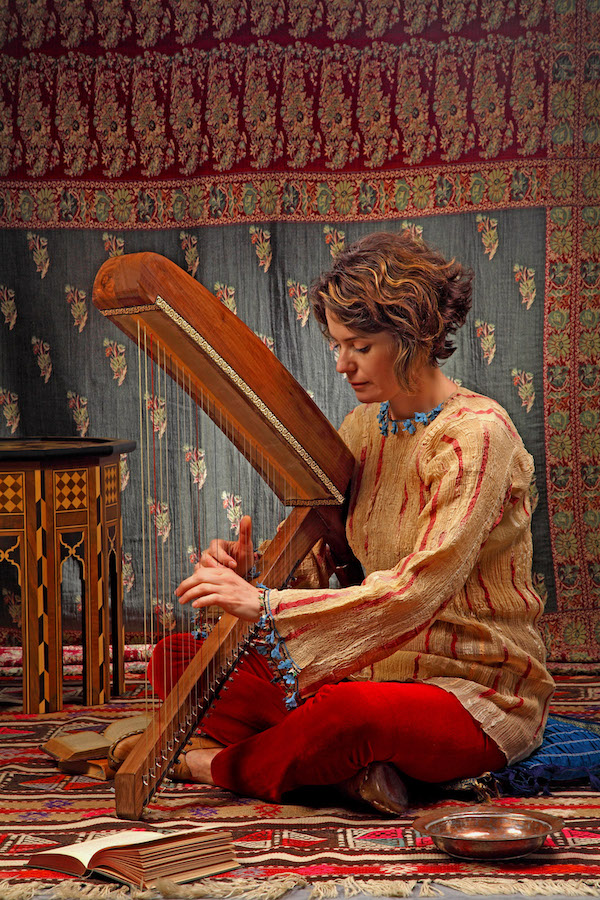
Şirin Pancaroğlu: It’s more about the harp than me, I think. The harp is an instrument that has many faces. The multitude of identities it presents is fascinating. The instrument that I’ve played from age 10 through my master’s degree—the pedal harp—is just a segment of the existence of the harp on this planet. Little by little, I came to discover these identities, either through music or through instruments. Towards the end of my master’s degree, I became very interested in playing different kinds of music with the harp. We have this mainstream repertoire that we must master so we can call ourselves professional pedal harpists, but I became more curious about music that was not traditionally played on the harp or was newly written for the harp. I became interested in contemporary composers who were inspired by traditional harps in their music. For example, when I was studying in Bloomington (at Indiana University), I became fascinated with the Latin American Music Center. The harp is very present in Latin America, and there was a vibrant generation of composers 30 years ago when I became conscious of that. That center offered me music scores for harp pieces and concertos that weren’t in the mainstream harp repertoire, but they sounded really interesting and were really good. It was not something I studied in school, but it was something I discovered. As I was studying to become a professional harpist, I took hold of something that was more personal than the mainstream repertoire, which I had to practice, and I loved and would never question why one must study it. As soon as I returned to Turkey in 2000, I hooked up with a Turkish composer Hasan Uçarsu. I had a long collaboration with him that resulted in the creation of new works. Back then I wasn’t really aware that we have a historic type of harp in our geography. It was hidden.
If you look at Medieval Islamic art, you can always see a small harp in scenes that depict musicians. So that was familiar to me—an instrument that looked like a harp. But I wouldn’t become conscious of that until I attended a concert of early Turkish music in Istanbul at the invitation of a famous Turkish composer Cinuçen Tanrıkorur. There I saw a çeng for the first time. Now the player didn’t do anything special with it, but I thought, here is this instrument I have seen in miniature paintings. That stuck in the back of my head. I didn’t follow up immediately, but it triggered some interest in me.
At that time, there was a record label that would record any music I wanted to play, so I had made lots of recordings. And at the same time, the media was very interested in writing about musicians and their latest recordings, especially pop recordings. Well, eventually they would hit a dead end, and they looked around and said, “Who else has released recordings?” And they stop on you because, of course, the harp is an appealing instrument, so they took an interest in those recordings I was doing. But when they interviewed me, they would question the identity of the harp. They’d say, “Well, you’re really playing a Western instrument.” I was a little bit annoyed by that. You can answer it once, but they keep asking me this, basically telling me what I do is wonderful, but it’s Western, not Turkish. Every time, I would say, “No, the harp doesn’t belong to one single geographic area. It’s an ancient instrument. We have examples of harps from China, from Africa, from Latin America, from Celtic traditions—it’s a huge world out there. We cannot say that the harp flourished from one point or that the harp belongs to one country or one geographic region.” I found myself teaching the history of the instrument. But I got tired of doing that, so I thought, what happens if I play this çeng?
HC: So you were trying to say, I can play the harp—any harp.
SP: Not really, rather that the harp does not fit into one single definition. We cannot say the harp is only Celtic or only Latin American. It has a variety of homelands. Playing the çeng was my way of showing people that the harp is also Turkish. These journalists were really baffled as I came out with these recordings of the çeng playing different music. In a way, Turkey is very segregated in these ideological encounters: What is Western? What is Turkish? What is Eastern? All of these questions, which I don’t find very relevant, personally, because I live in a part of the world which is like a bridge. It’s like a river, and Turkey has layers and layers of ancient civilizations underneath what is modern Turkey. The çeng fits into one of these layers. I thought learning and exploring the çeng was a good way to continue my musical journey, because I feel I must always learn. If I feel like I have arrived at the end of the road, I don’t feel good. I feel I must always be discovering, learning, trying to master something, so the çeng was good for me. I have studied Western music with some great teachers in my past. I studied with Pierre Jamet and Frederique Cambreling in France. My teacher in Switzerland, Catherine Eisenhoffer and Notburga Puskas were incredible influences. And then later came the magic touch of Susann McDonald. Those harpists were a great treasure box that accompanied me from my past. But after spending nearly 20 years abroad, I was back in Turkey, and the çeng allowed me to be in touch with great musicians back home. I was over 40, and I started like a total beginner with this instrument and this style of music. It took a lot of courage.

HC: Absolutely. To be a beginner at anything takes a lot of courage. Can you describe for us the basics of the çeng?
SP: I think originally, the çeng probably didn’t have levers. They were most likely added later to allow for some chromaticism. It’s basically a lap harp. It is quite similar to medieval lap harps you would find in Ireland, Wales, Scotland or maybe Bretagne in France, but the çeng is much more primitive because it has its roots in Mesopotamia. So it goes back 2000 years B.C. We know similar harps existed in Mesopotamia. Then one or two kinds of these harps flourished in the medieval period, from the 11th to the 15th centuries, in the region that is now Iran, Iraq, Syria, and a little bit later on in Ottoman Turkey. The çeng looks upside down when compared to a European lap harp, with the sound box in the uppermost part. It’s angular—it’s not a closed shape—so that affects the sound a lot. Also, the soundboard is covered with a very thin leather, not wood. So this all combines to produce a very specific sound—it’s very primitive—it sounds like something from far back in space and time. I really like the sound. It’s not an alternative sound to the lever or pedal harp. It’s just the sound of the çeng. It’s unique. I was really taken with it. It sounds sort of naked in a way—it’s not pretty or polished nor does it have much volume. I had never heard anything like it.
SP: When I decided that I wanted to do some work with the instrument in about 2007, I contacted the person who played on that concert I first heard, because I knew he made his own instrument. He said, “Why don’t you just keep playing the pedal harp. I need my instrument for my playing.” He didn’t want to build another one, which I respect. But I figured that I needed to write a project proposal because I would need some support to have an instrument built and music to play.
HC: Is there a community today of people in Turkey that is playing the çeng and found or created music?
SP: People are interested but çengs are difficult to make, so providing the instrument poses an obstacle.
HC: You said that the çeng disappeared from culture in the 17th century. Do you have any indication why?
SP: I’m not sure how popular it was or in what context it was highly esteemed. It was a courtly instrument, really, so I think it was quite political. In earlier times you might even see kings or sultans going to war, and there would be a couple of çeng players following close behind on horseback. I think it had a political connotation, which is somewhat difficult to understand now. We also know how well the instrument blended with mysticism. The way the instrument is built with the soundbox rising toward the sky, and at the end it bends, like it is bowing in front of God. So it served as an intermediary for philosophy and mysticism and all sorts of imagery.
HC: So the çeng’s popularity in society was maybe not as widespread as its placement in culture would suggest.
SP: Yes, [the instrument] had meanings attached to it. [It might not have been popular] but it did spread. Through the Silk Road, lots of exchanges have been possible from this area to China, Japan, Korea, and this instrument traveled along the Silk Road. You find that the Japanese koto is basically the same instrument. In China in the countryside, the çeng is the instrument of the peasants—it stayed there as a basic, primitive instrument. But in Turkey, other more robust instruments with a similar range came into being, and the çeng fell out of use.
HC: Instruments and music are constantly evolving and modernizing. Why do you think it’s important to understand these older traditional instruments and music in a time when we seem to always be looking to the next new thing?
SP: I discovered that by just living it. First of all, you understand the universe of your instrument much better if you come in contact with a historical version of it. The aesthetics of the sound are different in early instruments. It is really beautiful and has something one can not really find in modern instruments. For example, the practice of playing the çeng while sitting on the floor is such a wonderful experience because it really neutralizes your body. The other thing is because it’s not a closed shape, it allows for a sound that gives the feeling of vibrato, a more open-ended sound than you would get on a triangular harp. To listen and become aware of that made me listen to how I played the pedal harp in a totally different way. I realized that in a lot of music we perform as harpists, our left hand is always so busy and we want it to be so strong, that we don’t hear the melody enough in our modern playing. The çeng taught me that. If you play a historical instrument, you’ll get different feedback. If you’re connected with the instrument’s past, you can see the future better—what you want your instrument to sound like. It’s very enriching. It also takes you out of your musical comfort zone and does something to your brain. It opens up new little doors or windows, and you fill it up with new information. It’s a little like you are born again. But I could never imagine a life where I would play my pedal harp the way I used to play it before I played the çeng.
HC: That’s interesting how much it changed you as a musician.
SP: Playing the çeng also led me to try the lever harp. I had never really played it, but I decided to try some Turkish music on a lever harp, so I bought one back in 2013, a Starfish. It was so wonderful to travel with such a light instrument. I traveled around the world a couple of times with this instrument playing with Turkish musicians. The lever harp and Turkish music were a wonderful match. That opened up another world—writing, arranging, and publishing music for harp. That brought me into my publishing project—writing down Turkish music for çeng, lever harp, and pedal harp so harpists around the world can play this music. It is called “The Turkish Harp Project” and has recently received the support of Turkish Ministry of Culture.
HC: What Turkish music have you chosen to publish?
SP: A variety of Turkish music that sounds great on the harp. The collection has one series each for çeng, for lever harp and pedal harp. And then, there is music for amateur players and pedagogical works for children that fit into this. The music for the çeng is tricky because it has to be very simple, with very little chromaticism. Adding to the instrument’s accessibility issues, you have to play it sitting on the floor, which I am trying to change, along with some of the materials used. I’m working with Ardival Harps who made my best çeng so far, they are based in Scotland. However, I believe the playing of the çeng will always remain rare. One can, with lever harps obtain great results of Turkish music. The çeng, for one thing cannot be played with eight fingers. The fourth finger feels too long for its frame. So we have to propose music that suites fewer fingers. Music has to be diatonic with no big jumps and it’s only a 25-string instrument. For lever harp, the possibilities are endless with Turkish music. The collection includes educational material for various levels, and also a selection for top lever professionals. The music is very chromatic with lots of levers. There are some real fiery pieces—dance tunes, fast tunes. I really look for things that are challenging enough, but not impossible . And the collection will feature great pieces for pedal harp too.
HC: Are these original tunes or new arrangements?
SP: Some are traditional, some are eraly music examples, but there are also new pieces. I collaborate with a composer friend of mine, Bora Uymaz who taught me everything I know about Turkish music. He has written nearly 100 pieces for the harp. One of his pieces “Sons of Hypnos” was a finalist in the USA International Harp Competition Composition Contest. We write pieces together for the lever harp, çeng, and pedal harp. So the collection starts with one big book that is a primer book of Turkish music, titled Flavours of Turkish Music for Harpists, featuring 120 pieces for five different levels. Turkish music is based on the concept of makam. Makam is like modes, in a way, but more than modes. Rather than having just major and minor scales, we have at least 20 makam playable on the harp. So there is the makam side and there is the rhythm side. Music is based on rhythmic patterns, and those patterns can be very funky. There are different ways of grouping the rhythms to create grooves. You can have 10/8 grouped in one way and you can have 10/8 grouped in another way and the music moves differently.
HC: When do you hope to publish this collection?
SP: I will have 12 books plus the primer book ready in March 2022.
HC: I want to go back to the beginning and have you tell us how you came to the harp in the first place.
SP: Quite by chance, actually. I grew up in a musical family—my mom played the piano ,and my dad played the guitar. I liked music, and I would fool around on the piano from a very early age. I took some lessons, but then I continued on my own, which may have been a good thing because music has always been full of things to discover for me. I think that as a kid, it was freedom for me. Even in the most strictly written music, I feel like there is so much to discover in it because no composer can write down everything. There is so much to imagine, and that was always so interesting to me at the time. So I practiced piano on my own for four or five years, and then I took the entrance exams to the conservatory here in Turkey when I was 11. They asked me what instrument I wanted to play. I said it didn’t really matter. I played the piano, and I liked every single instrument. So they decided in this exam that they could give me a spot in the harp class.
HC: So you didn’t necessarily choose the harp? It was chosen for you at the conservatory?
SP: Exactly. I started to play the harp when I was 11. But by then I was able to read and decipher the music.
HC: So did you start on lever or pedal harp?
SP: Pedal harp—that was the only option back then. The first harp I ever played was a Horngacher. It was so heavy. It was a beautiful harp, but I had so many sore muscles. [Laughs] Then a couple of years later, my father got a job abroad, so my family moved to Indonesia, and I went to Switzerland because I was a music student and my parents realized that I could not continue my musical education in Indonesia, so they sent me to a family member who lived in Switzerland. I was separated from my family at age 13. It was not easy, I have to say.
HC: I’m sure. How long were you in Geneva?
SP: I was there for about eight years, and it was a very different time. I didn’t have any connection with my family unless we wrote letters—and we did. My mother, father, and sister wrote me letters every week. There would be one envelope with three letters inside. There was no direct phone connection between Switzerland and Indonesia. You would call this place and say you wanted to reach a certain number, and they would give you a call back two days later.
HC: No way!
SP: It’s not that long ago, but it was in some ways.
HC: It seems like a different world when you couldn’t even make a simple phone call. But you stuck with your musical path, so clearly you enjoyed it enough to endure the difficulties of being away from your family.
SP: Yes. By the time I was nearing the end of my undergrad in Switzerland, my dad, who had studied in Missouri, knew the reputation of Indiana [University]. He told me that if I wanted to go to another country to continue my musical studies, I should consider the United States, and there is a really good school there in Bloomington, Indiana. So I researched (there was no internet at the time) who teaches in Bloomington, and I found that Susann McDonald was teaching there. I had met her on one of her visits to France when she was a juror at a competition, and I was there for the summer class. My English wasn’t very good at the time, so I walked up to her and spoke French to her and told her that I would love to study with her. And she said, “Well, come my child.” I thought, “Wow!” And I asked her, “So you accept me?” And she said “Yes.” But she knew nothing of me. That feeling was so heartwarming because I wanted to study with her. She told me how to apply, and a year later, I was in Bloomington.
HC: How long were you in the United States?
SP: I took four years to do my master’s in Bloomington. That might sound sort of strange, but in the conservatory system I was part of in Switzerland, my teacher had me skip ahead, and so I was only 18 by the time I graduated with a university diploma. So that left me lots of time to do my master’s. I thought I would just take my time and learn as much as I could in Bloomington. After I graduated from Indiana, I spent eight more years freelancing in New York and Washington, D. C.
HC: You’ve spent significant time in some very different places. How do you think each of these places left their musical mark on you?
SP: When I lived in Europe, it was a wonderful time to learn about the French music for harp. I studied with three or four people who knew a lot about how to play French music on the harp. I also lived in an environment where there was a lot of good orchestra playing, and I played a lot of chamber music and began to teach at a very early age. I also spent one summer in France studying with Pierre Jamet at the summer academy in Gargilesse, and then I would go and study monthly with him in Paris. So I was surrounded by all of this music and art—it all came together and formed a good foundation for this large part of harp music that is French. Then when I went to Bloomington, there were people from everywhere and all sorts of different playing. Ms. McDonald never tried to have us play the same way. She kept everyone’s originality, and we never sounded alike. She gave a lot of importance to that. Maybe in Europe I was too extroverted for my teacher, because I was interested in different styles of music. I was always very picky about what I played, because what you put in your system should be worthy of your intention. So there was some friction when she would give me a piece I did not want to play. Once I came to Bloomington, it was a very open environment for all sorts of different perspectives. I really grew from the different experiences there. I was in Bloomington during a time when no internet existed, but [Bloomington] was like the internet of music.
HC: Interesting…because there were such varied musical perspectives there.
SP: Yes, and not just harpists. There were all of these incredible teachers there at the time—Joseph Gingold, János Starker, Franco Gulli—and I could listen to their masterclasses. It was a golden era. I was really grateful. I cherished every minute spent there. When I finished school, it was a strange feeling, because I felt like I still had a lot to learn, but I felt prepared to learn it on my own. That was my graduation—that feeling that I could go out there and fight for what I needed to learn. That feeling stayed with me. I always felt like the journey and the challenging situations along the way were good for me as a musician. The harp is very rich as an instrument. It gives you what it promises. Some people say, “Oh, the harp doesn’t have a great repertoire.” But I disagree. Life is not long enough to play everything that is worthy and everything that you can dig up and find to play on this instrument.
HC: Is life beginning to get back to normal for you, in terms of performing, after the pandemic?
SP: I really enjoyed being at home during this pandemic. I would have two or three concerts a month before, which would take me either abroad or somewhere in Turkey. Do I miss them? Yes, I do. But I also realized how much I missed home and I missed being with my son and husband [when I traveled]. The stability is wonderful right now. I feel like I will be much more picky with my concertizing.
HC: Yes, I’ve heard that from a lot of musicians. Now that we’ve had a taste of being home with our families more, the bar is higher for the concerts we choose to travel or be away from home to do.
SP: Exactly. I’ve been able to say no to certain things this fall, but keep the best.
HC: Any final thoughts about where you think the harp is heading?
SP: I feel like because of Zoom and other technology, we are all able to collaborate more closely, and I think the harp and harp teaching will really benefit from that. We already see what the internet has done—it’s taken the level of harp playing up. I was a juror in a German competition last month, and the level of technical playing among very young harpists was just incredible. I think that happens because so many exchanges are possible with technology. As a result of the pandemic, I think we are going to be sharing teaching and experiences and knowledge even more. Hopefully this will help elevate the harp to the place it deserves in the music world. While I do realize it’s been a big struggle for the harpists who do the most concertizing—we don’t get asked as much to play, we don’t get paid as much—I have found the post-pandemic era very promising for the harp. •






